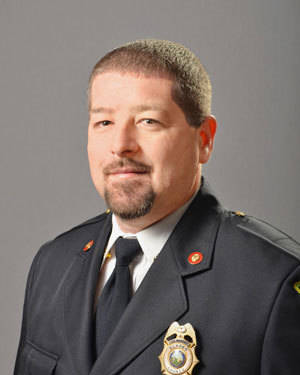ELIZABETHTOWN — As North Carolinians prepare for the 2017 hurricane season, the Bladen County Health Department is announcing a change to the Bladen County emergency shelters.
“Very quickly after Hurricane Matthew, we realized the septic system in Riegelwood is not capable of handling a large crowd at that facility,” said Emergency Services Director Bradley Kinlaw.
East Arcadia School, located at 21451 E. N.C. 87 in Riegelwood, will now serve as the emergency shelter for the East Arcadia community. In addition, the following three sites have been designated as emergency sites for Bladen County: Bladen Lakes Primary School, 9554 Johnsontown Road, Elizabethtown; East Bladen High School, 5600 E. N.C. 87, Elizabethtown; and West Bladen High School, 1600 N.C. Hwy. 410, Dublin.
The Bladen County EMS is also making changes to the emergency plan.
“I’m writing a plan right now so that, from start to finish, everybody knows who’s responsible for what, and it will include areas such as how to help citizens get medical care or prescriptions — things like that, that we’ve never written down,” Kinlaw explained.
He added, “Everybody did a great job during Hurricane Matthew — and they did it even without power in some cases — but we just need to refine roles and responsibilities so everybody has a good idea of what needs to happen.”
Once finalized, the plan will be shared with stakeholders like the health department, DSS, the hospital, Red Cross, and the school system.
In May, the National Hurricane Center released a report predicting another above-normal hurricane season in 2017, thanks in part to a weak El Nino system. When El Nino is strong, the wind shear typically serves to suppress the development of Atlantic hurricanes, so a weak system would favor more storms. That situation, combined with normal or above-normal water surface temperatures, could produce as many storms as 2016.
Last year — the most active since 2012 — saw 15 named storms, including seven hurricanes and four major hurricanes. October’s Hurricane Matthew caused $10 billion in damage and killed 585 people in the U.S. and the Caribbean, making it one of the deadliest recorded Atlantic hurricanes.
Normally, the Atlantic sees 12 named storms, six of which become hurricanes, three of which are Category 3, 4 or 5.
North Carolina sees her fair share of those storms. According to the North Carolina State Climatology Office, the Tar Heel State is hit by a tropical storm, on average, about every four years. The state ranks fourth in the nation, behind Florida, Louisiana, and Texas, in number of storms, which climatologists attribute to the state’s topography and shape.
If National Hurricane Center forecasters are correct, the Atlantic hurricane season, which runs from June 1 to Nov. 30, should see 11 to 17 named storms. Predictors say there is a 70 percent chance of up to 17 storms, and between five and nine of them will become hurricanes with winds topping 74 mph. Two to four will become Category 3, 4 or 5 storms. There is only a 35 percent chance of a normal or near-normal season and a 20 percent chance of a below-normal season.
“I certainly hope the lesson learned from Hurricane Matthew is that we are vulnerable to being without power for numerous days and having restrictive travel,” commented Kinlaw. “I hope people are making their 72-hour kits and, most importantly, they don’t drive through flood waters — that’s just a senseless loss of life.”
Chrysta Carroll can be reached by calling 910-862-4163.


